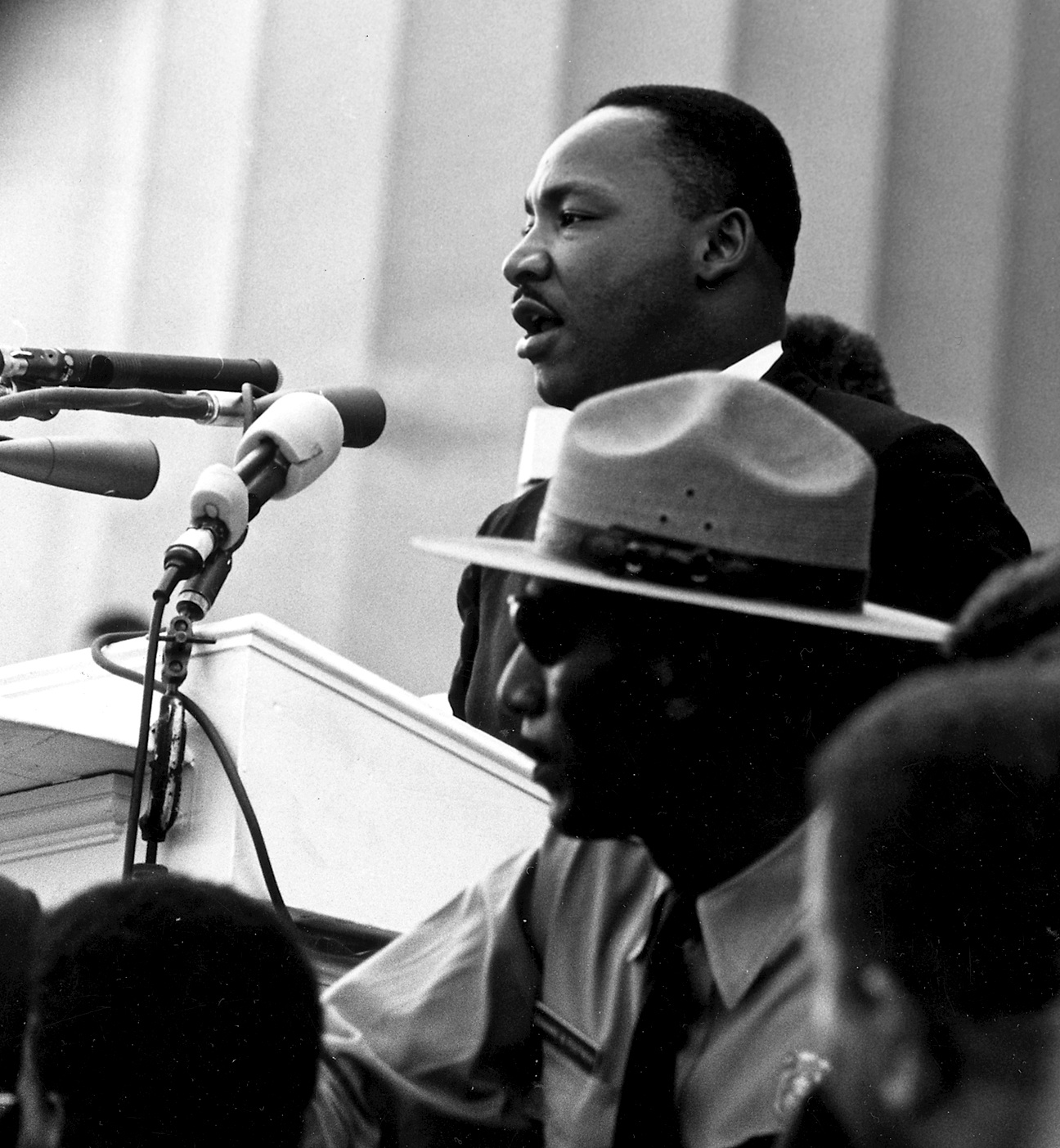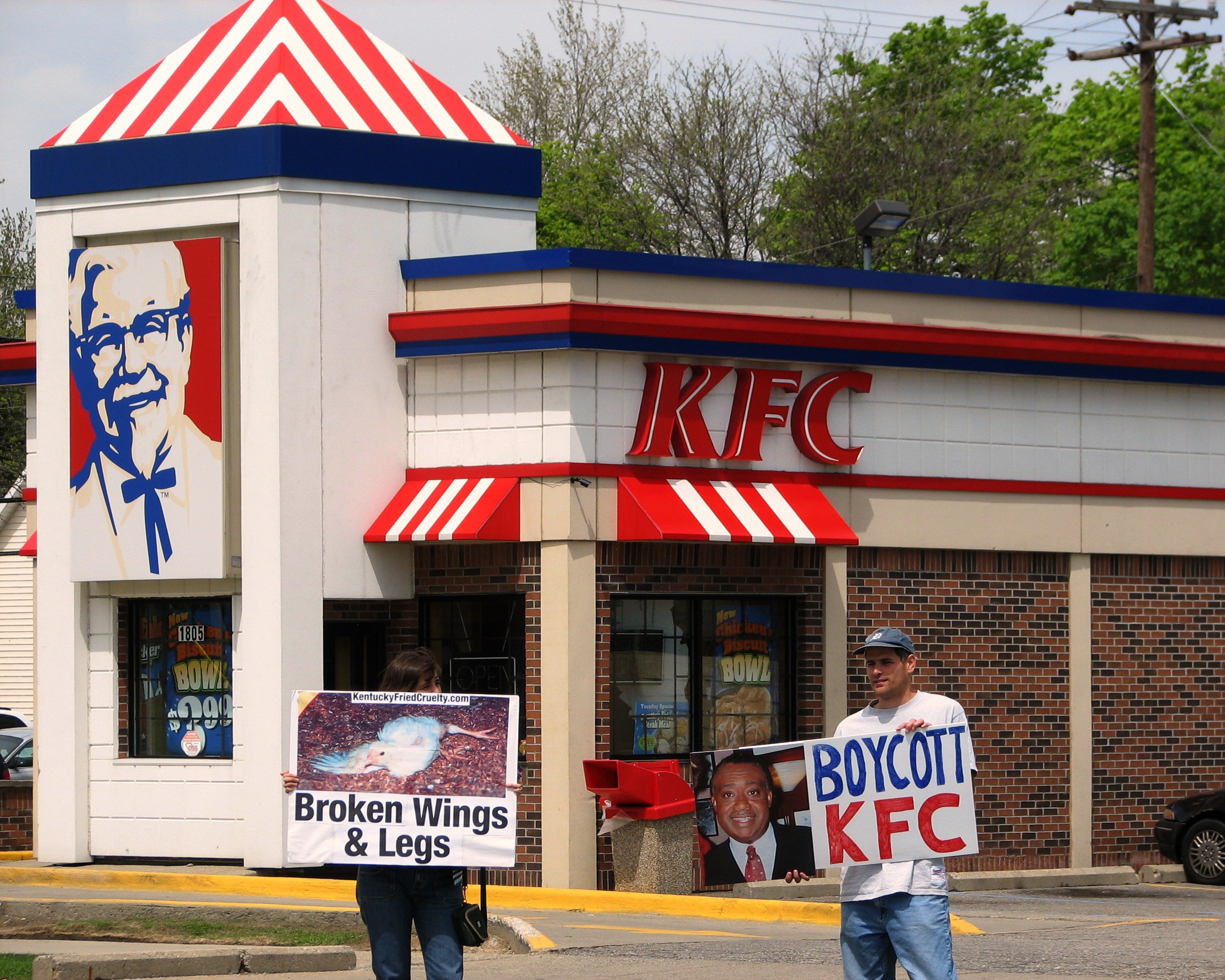|
Clara Luper
Clara Shepard Luper (born Clara Mae Shepard May 3, 1923 – June 8, 2011) was a civic leader, schoolteacher, and pioneering leader in the American Civil Rights Movement. She is best known for her leadership role in the 1958 Oklahoma City sit-in movement, as she, her young son and daughter, and numerous young members of the NAACP Youth Council successfully conducted carefully planned nonviolent sit-in protests of downtown drugstore lunch-counters, which overturned their policies of segregation. The Clara Luper Corridor is a streetscape and civic beautification project from the Oklahoma Capitol area east to northeast Oklahoma City. In 1972, Clara Luper was an Oklahoma candidate for election to the United States Senate. When asked by the press if she, a black woman, could represent white people, she responded: “Of course, I can represent white people, black people, red people, yellow people, brown people, and polka dot people. You see, I have lived long enough to know that peo ... [...More Info...] [...Related Items...] OR: [Wikipedia] [Google] [Baidu] |
Okfuskee County, Oklahoma
Okfuskee County is a county located in the U.S. state of Oklahoma. As of the 2010 census, its population was 12,191. Its county seat is Okemah. The county is named for a former Muscogee town in present Cleburne County, Alabama, that in turn was named for the Okfuskee, a Muscogee tribe. History The area now covered by Okfuskee County was occupied by the Quapaw and Osage tribes until 1825, when they ceded the land to the United States government. The Creeks moved here in the early 1830s and built two towns, Greenleaf and Thlopthlocco. During the Civil War, Thlopthlocco served as headquarters for Confederate Col. Douglas H. Cooper. Greenleaf was where Chief Opothleyahola camped while he tried to retain unity among the Creeks, before leading over 5000 Creeks to Kansas to avoid the war. [...More Info...] [...Related Items...] OR: [Wikipedia] [Google] [Baidu] |
Nonviolence
Nonviolence is the personal practice of not causing harm to others under any condition. It may come from the belief that hurting people, animals and/or the environment is unnecessary to achieve an outcome and it may refer to a general philosophy of abstention from violence. It may be based on moral, Religion, religious or spiritual principles, or the reasons for it may be strategic or pragmatic. Failure to distinguish between the two types of nonviolent approaches can lead to distortion in the concept's meaning and effectiveness, which can subsequently result in confusion among the audience. Although both principled and pragmatic nonviolent approaches preach for nonviolence, they may have distinct motives, goals, philosophies, and techniques. However, rather than debating the best practice between the two approaches, both can indicate alternative paths for those who do not want to use violence. These forms of nonviolence approaches (pragmatic and principled) will be discussed in ... [...More Info...] [...Related Items...] OR: [Wikipedia] [Google] [Baidu] |
Bloody Sunday (1965)
The Selma to Montgomery marches were three protest marches, held in 1965, along the 54-mile (87 km) highway from Selma, Alabama, to the state capital of Montgomery. The marches were organized by nonviolent activists to demonstrate the desire of African-American citizens to exercise their constitutional right to vote, in defiance of segregationist repression; they were part of a broader voting rights movement underway in Selma and throughout the American South. By highlighting racial injustice, they contributed to passage that year of the Voting Rights Act, a landmark federal achievement of the civil rights movement The civil rights movement was a nonviolent social and political movement and campaign from 1954 to 1968 in the United States to abolish legalized institutional racial segregation, discrimination, and disenfranchisement throughout the Unite .... Southern state legislatures had passed and maintained a series of discriminatory requirements and practic ... [...More Info...] [...Related Items...] OR: [Wikipedia] [Google] [Baidu] |
Selma To Montgomery Marches
The Selma to Montgomery marches were three protest marches, held in 1965, along the 54-mile (87 km) highway from Selma, Alabama, to the state capital of Montgomery. The marches were organized by nonviolent activists to demonstrate the desire of African-American citizens to exercise their constitutional right to vote, in defiance of segregationist repression; they were part of a broader voting rights movement underway in Selma and throughout the American South. By highlighting racial injustice, they contributed to passage that year of the Voting Rights Act, a landmark federal achievement of the civil rights movement. Southern state legislatures had passed and maintained a series of discriminatory requirements and practices that had disenfranchised most of the millions of African Americans across the South throughout the 20th century. The African-American group known as the Dallas County Voters League (DCVL) launched a voter registration campaign in Selma in 1963. Joined ... [...More Info...] [...Related Items...] OR: [Wikipedia] [Google] [Baidu] |
I Have A Dream
"I Have a Dream" is a public speech that was delivered by American civil rights activist and Baptist minister, Martin Luther King Jr., during the March on Washington for Jobs and Freedom on August 28, 1963. In the speech, King called for civil and economic rights and an end to racism in the United States. Delivered to over 250,000 civil rights supporters from the steps of the Lincoln Memorial in Washington, D.C., the speech was a defining moment of the civil rights movement and among the most iconic speeches in American history. Beginning with a reference to the Emancipation Proclamation, which declared millions of slaves free in 1863, King said "one hundred years later, the Negro still is not free".Alexandra Alvarez, "Martin Luther King's 'I Have a Dream': The Speech Event as Metaphor", ''Journal of Black Studies'' 18(3); . Toward the end of the speech, King departed from his prepared text for a partly improvised peroration on the theme "I have a dream", prompted ... [...More Info...] [...Related Items...] OR: [Wikipedia] [Google] [Baidu] |
1963 March On Washington
Events January * January 1 – Bogle–Chandler case: Commonwealth Scientific and Industrial Research Organisation scientist Dr. Gilbert Bogle and Mrs. Margaret Chandler are found dead (presumed poisoned), in bushland near the Lane Cove River, Sydney, Australia. * January 2 – Vietnam War – Battle of Ap Bac: The Viet Cong win their first major victory. * January 9 – A total penumbral lunar eclipse is visible in the Americas, Europe, Africa, and Asia, and is the 56th lunar eclipse of Lunar Saros 114. Gamma has a value of −1.01282. It occurs on the night between Wednesday, January 9 and Thursday, January 10, 1963. * January 13 – 1963 Togolese coup d'état: A military coup in Togo results in the installation of coup leader Emmanuel Bodjollé as president. * January 17 – A last quarter moon occurs between the penumbral lunar eclipse and the annular solar eclipse, only 12 hours, 29 minutes after apogee. * January 19 – Soviet spy Gheorgh ... [...More Info...] [...Related Items...] OR: [Wikipedia] [Google] [Baidu] |
Civil Rights Movement
The civil rights movement was a nonviolent social and political movement and campaign from 1954 to 1968 in the United States to abolish legalized institutional Racial segregation in the United States, racial segregation, Racial discrimination in the United States, discrimination, and disenfranchisement in the United States, disenfranchisement throughout the United States. The movement had its origins in the Reconstruction era during the late 19th century, although it made its largest legislative gains in the 1960s after years of direct actions and grassroots protests. The social movement's major nonviolent resistance and civil disobedience campaigns eventually secured new protections in federal law for the civil rights of all Americans. After the American Civil War and the subsequent Abolitionism in the United States, abolition of slavery in the 1860s, the Reconstruction Amendments to the United States Constitution granted emancipation and constitutional rights of citizenship ... [...More Info...] [...Related Items...] OR: [Wikipedia] [Google] [Baidu] |
Greensboro Sit-ins
The Greensboro sit-ins were a series of nonviolent protests in February to July 1960, primarily in the Woolworth store—now the International Civil Rights Center and Museum—in Greensboro, North Carolina, which led to the F. W. Woolworth Company department store chain removing its policy of racial segregation in the Southern United States. While not the first sit-in of the civil rights movement, the Greensboro sit-ins were an instrumental action, and also the best-known sit-ins of the civil rights movement. They are considered a catalyst to the subsequent sit-in movement, in which 70,000 people participated. This sit-in was a contributing factor in the formation of the Student Nonviolent Coordinating Committee (SNCC). Previous sit-ins In August 1939, African-American attorney Samuel Wilbert Tucker organized the Alexandria Library sit-in in Virginia (now the Alexandria Black History Museum). In 1942, the Congress of Racial Equality sponsored sit-ins in Chicago, as they did in ... [...More Info...] [...Related Items...] OR: [Wikipedia] [Google] [Baidu] |
Katz Drug Store Sit-in
The Katz Drug Store sit-in was one of the first sit-ins during the civil rights movement, occurring on August 19, 1958, in Oklahoma City, Oklahoma. In protest of racial discrimination, black schoolchildren sat at a lunch counter with their teacher demanding food, refusing to leave until they were served. They sought to end the racial segregation of eating places in their city, sparking a sit-in movement in Oklahoma City that lasted for years. Event In 1958, even though separate but equal had been overturned, racial discrimination was still commonplace and restricted blacks from sharing many public spaces with whites.Walker, Devona. "50 Years Ago, Children Helped Change Nation When They Sat Down." Oklahoman.com, Oklahoman, 20 Aug. 2008, https://www.oklahoman.com/article/3285497/50- years-ago-children-helped-change-nation-when-they-sat-down. Black people had to drink from colored fountains, ride the back of buses, and were given their dinners in bags to eat outside of the restaur ... [...More Info...] [...Related Items...] OR: [Wikipedia] [Google] [Baidu] |
Kansas City, Missouri
Kansas City (abbreviated KC or KCMO) is the largest city in Missouri by population and area. As of the 2020 census, the city had a population of 508,090 in 2020, making it the 36th most-populous city in the United States. It is the central city of the Kansas City metropolitan area, which straddles the Missouri–Kansas state line and has a population of 2,392,035. Most of the city lies within Jackson County, with portions spilling into Clay, Cass, and Platte counties. Kansas City was founded in the 1830s as a port on the Missouri River at its confluence with the Kansas River coming in from the west. On June 1, 1850, the town of Kansas was incorporated; shortly after came the establishment of the Kansas Territory. Confusion between the two ensued, and the name Kansas City was assigned to distinguish them soon after. Sitting on Missouri's western boundary with Kansas, with Downtown near the confluence of the Kansas and Missouri Rivers, the city encompasses about , making ... [...More Info...] [...Related Items...] OR: [Wikipedia] [Google] [Baidu] |
Boycott
A boycott is an act of nonviolent, voluntary abstention from a product, person, organization, or country as an expression of protest. It is usually for moral, social, political, or environmental reasons. The purpose of a boycott is to inflict some economic loss on the target, or to indicate a moral outrage, to try to compel the target to alter an objectionable behavior. The word is named after Captain Charles Boycott, agent of an absentee landlord in Ireland, against whom the tactic was successfully employed after a suggestion by Irish nationalist leader Charles Stewart Parnell and his Irish Land League in 1880. Sometimes, a boycott can be a form of consumer activism, sometimes called moral purchasing. When a similar practice is legislated by a national government, it is known as a sanction. Frequently, however, the threat of boycotting a business is an empty threat, with no significant effect on sales. Etymology The word ''boycott'' entered the English language during the ... [...More Info...] [...Related Items...] OR: [Wikipedia] [Google] [Baidu] |







.jpg)

